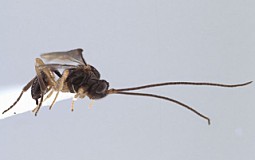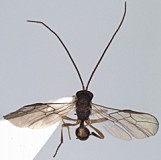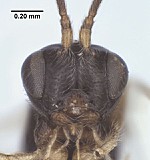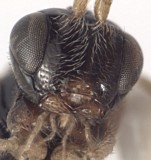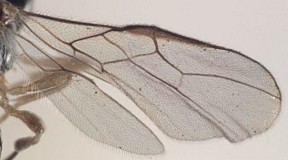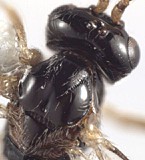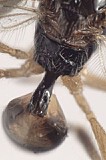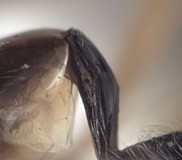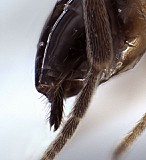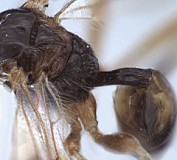Head with labrum partly exposed (Figs 3, 4); clypeus (Fig. 3, 4) tall, broader than high, flat or nearly so, not protruding from face in lateral view, ventral margin truncate to weakly concave, depending on angle of view; mandible without basal tooth or lobe, distinctly narrowing apically; malar space distinct, malar sulcus deep, weakly curved; antenna long (Figs 1, 2), with 34-36 flagellomeres in female, 33-35 in male. Mesosoma with pronotum not visible in dorsal view; notauli (Fig. 6) narrow, deeply impressed at base, weakly converging posteriorly, extending as shallow crenulate grooves more than half length of mesoscutum but not reaching midpit, curving laterally at base to form marginal carina extending to tegula, marginal carina crenulate on medial side, midpit a little longer than greatest width, tear-drop shaped (Figs 6, 8); scuto-scutellar sulcus rectangular, sparsely crenulate (Fig. 8); precoxal sulcus (Fig. 1) deep, long, crenulate throughout, extending dorsally nearly to midpoint of pronotum; propodeum (Figs 7-9) rugulose to granular rugose posteriorly, anterior transverse arms and median carina of a wide areola distinct anteriorly. Fore wing (Fig. 5) with stigma curled in holotype, r1 arising distinctly basad midpoint of stigma and longer than width of stigma; m-cu postfurcal, entering extreme base of second submarginal cell; second submarginal cell nearly parallel-sided; 2CUb arising above middle of posterior margin of 1st subdiscal cell. Hind femur (Fig. 1) broadening distally, neither slender nor bilobed, yellow throughout. Metasoma with T1 long and narrow (Fig. 9) about 3 x longer than apical width, nearly parallel-sided; T1 mostly smooth (Figs 8-10), dorsal-lateral carina short, weak, lateral carina longer, extending through spiracle, weak; spiracle at apical 0.6; S1 extending nearly full length of T1 and fused to T1; dorsope and laterope absent; T2+3 mostly yellow (Figs 2, 7), remainder of metasoma dorsally dark brown.
This species is readily distinguished from other Lorenzopius by the distinctive pair of pits subapically on T1 (Fig. 9). The dorsal surface of T1 is also flatter over the basal half and the scuto-scutellar sulcus is more sparsely crenulate than Lorenzopius tubulatus.

